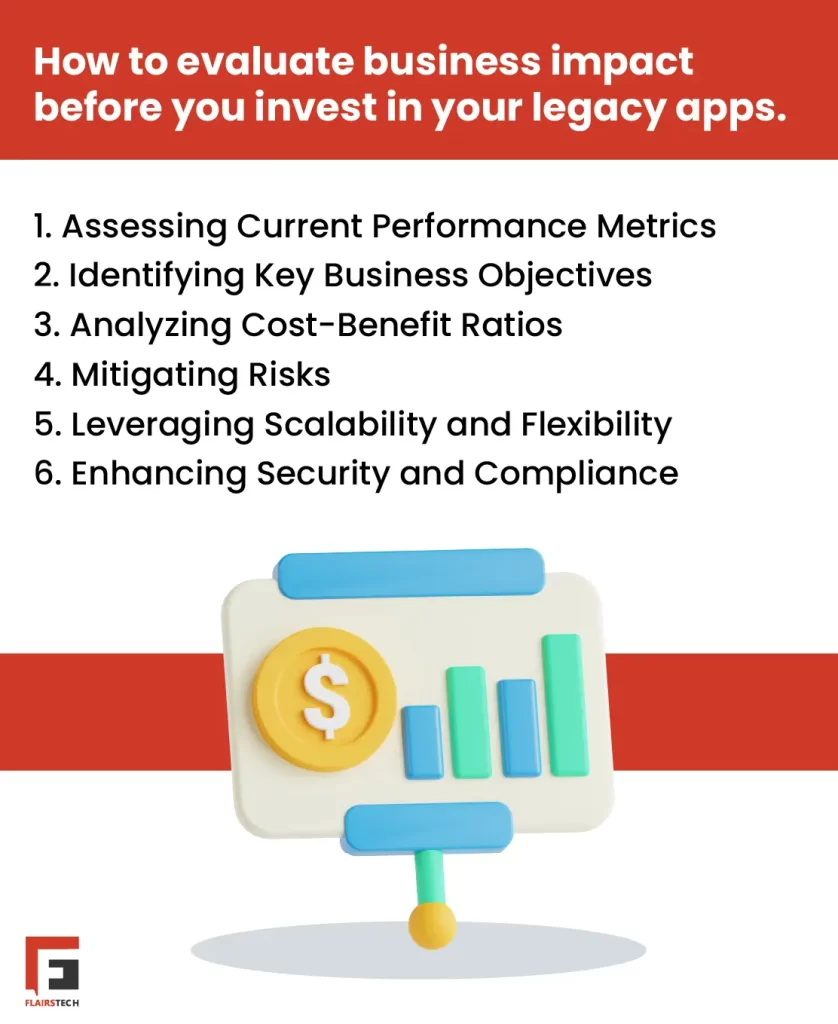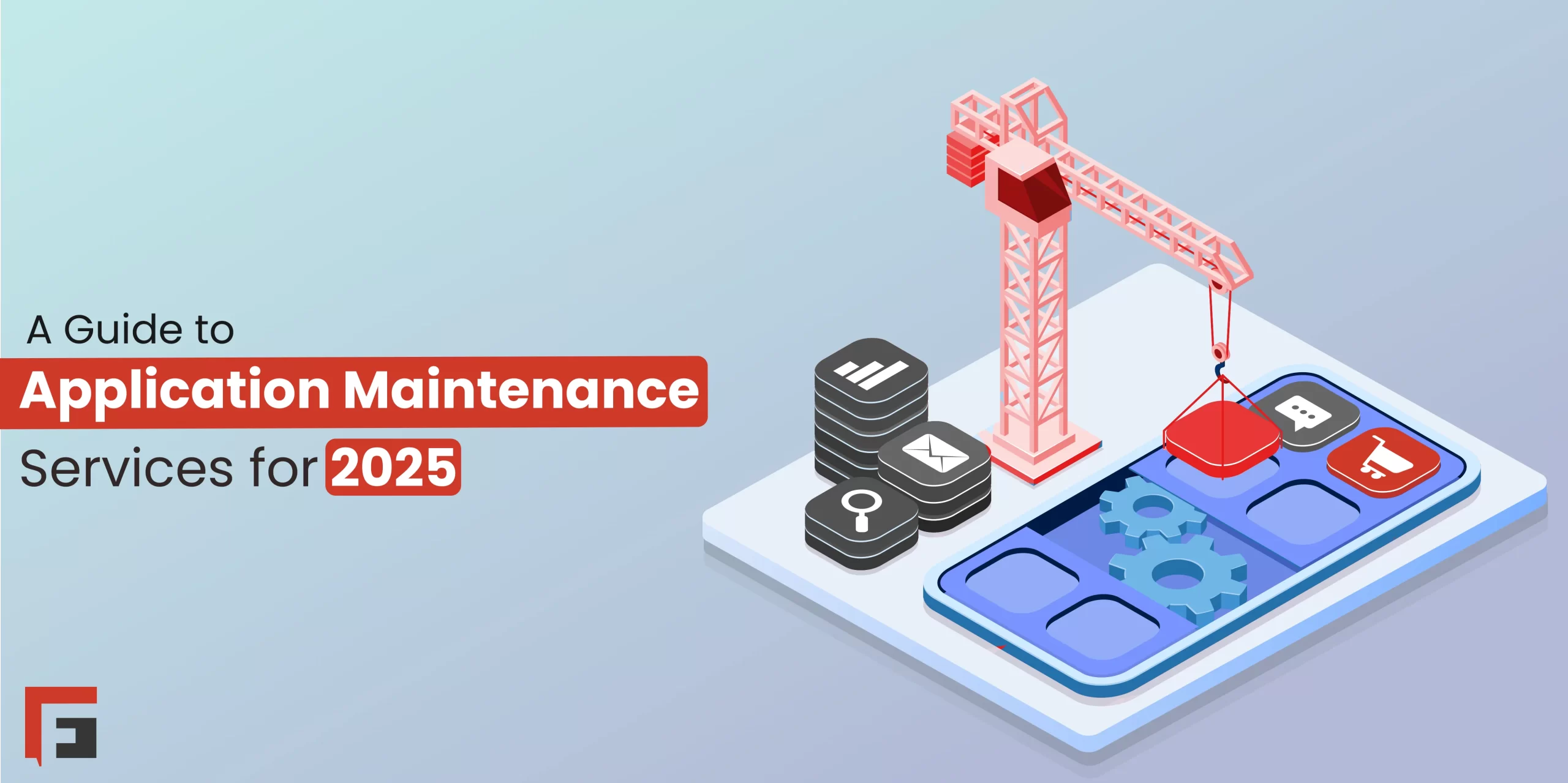
Before You Invest in Your Legacy Apps; A Comprehensive Guide
| Author: | Amr Fahmy |
|---|---|
| Last updated: | |
| Categories: | Application Maintenance |
| Reading time: | 20 mins |
Legacy applications, once the backbone of operations, often become burdensome as they age and a bottleneck for growth and innovation. Though venerable, legacy apps require constant application maintenance services and, at times, even entire modernization. Legacy application modernization is a strategic imperative for businesses navigating today’s rapidly evolving technology landscape.
As technology rapidly advances, Application maintenance transforms into a perpetual cycle, amplifying the looming risk of security breaches. This challenge is vividly exemplified by the ten oldest federal government legacy systems, demanding an annual maintenance cost of $337 million for operation.
Amidst this landscape, our comprehensive guide navigates the intricacies of legacy app modernization. Delving into the indicators signaling your apps’ outdated nature and the pivotal drivers fueling the urgency for modernization, we uncover the essential steps.
From formulating a strategy to selecting the right modernization approach, this guide empowers you with the knowledge and insights necessary to embark on a transformative journey and make informed decisions that resonate with the evolving demands of technology and business. So, before you take on legacy app modernization, let’s delve into the essentials.
Chapter 1: Understanding Legacy Apps…
What is a legacy application?
A legacy application, often referred to simply as a “legacy app,” is a software application or program that has been in use for a significant period, typically several years or even decades. These applications are considered “legacy” because they are older and may no longer be actively developed or maintained by their original creators.
Identifying when your legacy applications have reached a point of diminishing returns (Signs It’s Time for an Investment)
Stefan Van Der Zijden, VP Analyst at Gartner, says, “For many organizations, legacy systems are seen as holding back the business initiatives and business processes that rely on them,”. To determine whether your legacy apps require attention, modernization, or replacement altogether, you need to recognize their ages through the following key indicators:
Last Update Date: Check when the application was last updated or received a significant version upgrade. Older applications tend to have longer gaps between updates and upgrades.
Release Date: Review the initial release date or version of the application. The older the version, the more likely it is a legacy app. E.g. a legacy version of Microsoft Office, like Office 2003, was released in November 2003.
Obsolete Technologies: Identify the programming languages, frameworks, or technologies on which the application is built. Outdated or obsolete technologies are a clear sign of an aging application.
Documentation and Support: Assess the availability and quality of documentation and support for the application. A lack of recent documentation or official support can indicate an older application.
User Feedback: Collect feedback from users or internal teams who interact with the application regularly. If they mention issues related to the application’s age or limitations, it’s worth investigating further.
Compatibility Challenges: Determine whether the application faces compatibility issues with modern operating systems, browsers, or hardware. Frequent compatibility problems can be a sign of an aging application.
Performance Degradation: Observe if the application experiences performance issues or slowdowns, especially as hardware and software environments evolve.
Integration Challenges: Assess the ease with which the application integrates with other systems or software. Difficulty in integration can be an indicator of legacy status.
Vendor or Developer Status: If the original vendor or developer has discontinued the application or gone out of business, it may be considered a legacy app.
Longevity in Use: Consider how long the application has been in use within your organization. Applications that have been in service for many years are more likely to be legacy apps.
Dependency on Outdated Services: If the application relies on services or APIs that are no longer supported or have been deprecated, it’s a sign of aging.
Regulatory Compliance: Check whether the application complies with modern regulatory requirements and security standards. Non-compliance can be a concern with older apps.
By assessing the above versions, you will gain a clearer understanding of whether your applications fall into the category of legacy apps. Recognizing the age of your applications is the first step toward making informed decisions about your next move, whether that involves an investment towards modernization, entire replacement, or continued use with appropriate maintenance.
Chapter 2: Understanding Legacy App Maintenance
Traditionally, businesses that run on legacy apps resort to ongoing investments in maintenance. For ages, long before legacy apps modernization became a valid technology approach, those investments in maintaining legacy apps and systems made sense to payees and served their purpose; however, with the multiple benefits of the modernization approaches, the endless payments to maintain legacy apps is falling behind.
Moreover, as legacy systems age, the expenses associated with their maintenance increase, imposing a financial burden on businesses, with costs reaching up to 15% of their budget annually for maintenance alone.
What is legacy app maintenance?
Legacy app maintenance refers to the ongoing process of supporting, updating, and managing older software applications to ensure they continue to function correctly, remain secure, and meet the evolving needs of users and the organization.
Escalating Legacy App Maintenance Costs: A Stealthy Budget Erosion
1. Technological Obsolescence: One of the key factors contributing to escalating maintenance costs is technological obsolescence. Legacy applications, built on outdated frameworks and programming languages, demand specialized expertise, often from professionals who are well-versed in technologies that are no longer widely used. The scarcity of such experts in the job market automatically inflates the cost of their services. Moreover, as the software ages, finding compatible hardware and software components becomes increasingly challenging, leading to additional expenses.
2. Patchwork Solutions and Band-Aid Fixes: To keep a legacy application operational, companies often resort to patchwork solutions and quick fixes. While these short-term remedies might resolve immediate issues, they are akin to applying band-aids to a wound that needs stitches. Over time, these patches accumulate, making the system more complex and difficult to maintain. Consequently, the effort and time invested in these temporary solutions contribute substantially to the overall maintenance costs.
3. Security Concerns: Legacy applications are vulnerable to security breaches due to their outdated architecture and lack of up-to-date security features. As cyber threats continue to evolve, legacy systems become increasingly susceptible to attacks. To safeguard these applications, businesses need to invest in additional security measures, further driving up maintenance expenses.
Calculating the True Cost of Maintaining Legacy Applications: A Comprehensive Approach
1. Direct Monetary Expenses: The direct monetary expenses of maintaining a legacy application include the costs associated with hiring specialized developers, purchasing outdated software licenses, and acquiring rare hardware components. These expenses are tangible and directly impact the budget, making them the most visible aspect of maintenance costs.
2. Opportunity Costs: Opportunity costs are the intangible expenses incurred due to the lost opportunities resulting from the limitations of legacy software. For instance, outdated systems might lack the capabilities to integrate with modern tools or adapt to changing customer demands swiftly. Consequently, businesses relying on legacy applications might lose out on potential collaborations, market expansions, or innovations that could significantly enhance their revenue streams.
3. Productivity Losses: Outdated interfaces and slow processing speeds inherent in legacy applications can hamper employee productivity. Inefficient workflows and time-consuming tasks reduce overall operational efficiency, leading to productivity losses. These losses, although challenging to quantify precisely, significantly impact the organization’s bottom line over time.
4. Customer Satisfaction and Retention: Customers today expect seamless digital experiences. Legacy applications, with their clunky interfaces and limited functionalities, often fail to meet these expectations. Dissatisfied customers are more likely to switch to competitors offering modern, user-friendly solutions. The loss of customer satisfaction and subsequent customer churn represent substantial hidden costs associated with maintaining legacy applications.
Furthermore, the true cost of maintaining legacy applications extends far beyond the visible expenses. By understanding and quantifying both the direct monetary expenses and the intangible costs such as opportunity losses, productivity reductions, and customer dissatisfaction, businesses can make well-informed decisions about modernization. Legacy app modernization isn’t just a technical upgrade; it’s, as we mentioned, a strategic, well-rounded investment that ensures long-term competitiveness, operational efficiency, and financial sustainability in today’s dynamic business landscape.
After understanding the factors that contribute to the cost of maintaining legacy apps, and before investing further valuable resources in revamping them, it’s important for you to evaluate the potential business impact of such a decision.
The following are the crucial aspects of evaluating business impact before you invest in your legacy apps.

1. Assessing Current Performance Metrics
Before embarking on any transformational journey, businesses must have a clear understanding of their current state. Evaluate the existing legacy applications in terms of performance metrics. This includes response times, error rates, and overall user satisfaction. By quantifying these aspects, you can identify pain points and areas that require immediate attention. Detailed performance analysis provides a baseline against which the impact of any changes can be measured.
2. Identifying Key Business Objectives
Every business decision should be aligned with overarching goals. Identify the key business objectives that your organization aims to achieve. Whether it’s enhancing customer experience, improving operational efficiency, or ensuring data security, understanding these objectives is fundamental. Legacy app modernization should directly contribute to these goals. A clear alignment ensures that the investment addresses strategic imperatives, thus maximizing its impact.
3. Analyzing Cost-Benefit Ratios
Financial considerations play a pivotal role in evaluating the impact of modernizing legacy applications. Calculate the costs associated with revamping the existing applications against the potential benefits. Factor in development costs, training expenses, and expected productivity gains. It’s essential to conduct a comprehensive cost-benefit analysis that considers both short-term and long-term implications. A positive cost-benefit ratio indicates a potentially high business impact.
4. Mitigating Risks
Legacy app modernization comes with inherent risks such as data loss, system downtime, and integration challenges. Evaluate these risks meticulously and develop a robust mitigation strategy. Identify contingency plans and establish protocols to minimize disruptions during the transition phase. Mitigating risks effectively ensures that the modernization process is smooth, safeguarding business continuity and customer satisfaction.
5. Leveraging Scalability and Flexibility
Scalability and flexibility are indispensable in today’s dynamic business environment. Legacy applications often lack the agility required to adapt to changing market demands. Assess how modernization efforts can enhance the scalability and flexibility of your applications. Scalable applications can handle increased workloads seamlessly, while flexible systems can accommodate new features and technologies. These factors directly impact your business’s ability to respond to market shifts and customer needs swiftly.
6. Enhancing Security and Compliance
Security breaches and non-compliance can have catastrophic consequences for businesses. Evaluate the security features of your legacy applications and assess compliance with industry standards and regulations. Modernizing legacy apps provides an opportunity to implement robust security measures, ensuring the protection of sensitive data and adherence to legal requirements. Enhanced security and compliance contribute significantly to the overall business impact by building trust among customers and stakeholders.
7. Empowering User Experience
User experience is paramount in today’s digital landscape. Legacy applications often lack the intuitive interfaces and seamless interactions expected by modern users. Evaluate how modernization efforts can empower user experience. Intuitive designs, responsive interfaces, and personalized user journeys enhance user satisfaction. Positive user experiences translate directly into customer loyalty, higher engagement, and increased revenue, amplifying the business impact.
Evaluating the business impact before investing in legacy app modernization is not just a prudent approach; it is a strategic necessity. By assessing current performance metrics, aligning with key business objectives, analyzing cost-benefit ratios, mitigating risks, leveraging scalability and flexibility, enhancing security and compliance, and empowering user experience, businesses can make informed decisions that yield significant positive outcomes. Modernizing legacy applications, when approached with a comprehensive understanding of their potential impact, can revitalize businesses, driving innovation, efficiency, and growth in the digital age.
Chapter 3: Understanding Legacy App Modernization
The decision to move beyond legacy systems is one driven by the need for improved efficiency, enhanced security, and the ability to leverage modern technologies. Modernization is not just about updating software; it’s a holistic approach to transforming your IT landscape. It involves upgrading technology infrastructure, adopting contemporary development methodologies, and aligning systems with current business needs. As of 2020, a significant 78% of companies continue to depend on outdated business critical systems, despite the initiation of modernization efforts by many. Additionally, approximately 33% rely on legacy technology for their overall systems.
Modernization breathes new life into your applications, making them more agile, scalable, and resilient.
What is legacy app modernization?
Legacy app modernization refers to the process of updating and transforming older software applications (legacy applications) to align them with current technology standards, enhance their functionality, and improve overall performance. Modernization efforts aim to overcome these challenges and bring several benefits to the organization.
The Benefits of Modernization
Enhanced Performance: Modernized applications are designed to deliver superior performance, ensuring a seamless user experience. Faster response times and improved efficiency contribute to increased productivity.
Security Reinforcement: Cyber threats are ever-evolving, and legacy applications are often more susceptible. Modernization allows for the implementation of robust security measures, protecting your data and ensuring compliance with industry standards.
Cost Optimization: While the initial investment in modernization may seem significant, the long-term benefits include reduced maintenance costs, improved resource efficiency, and a lower total cost of ownership.
Scalability and Flexibility: Modern applications are built to scale with your business. They provide the flexibility to adapt to changing requirements and integrate seamlessly with emerging technologies.
Competitive Edge: Modernized systems give your business a competitive advantage. They enable you to innovate faster, stay ahead of industry trends, and respond swiftly to market demands.
The Challenges in the Transition from Legacy App Maintenance to Modernization
Resistance to Change: Employees may be resistant to abandoning familiar systems, especially if they’ve grown accustomed to legacy applications. Proper communication and training are essential to address this challenge.
Data Migration Complexities: Moving from legacy systems often involves migrating large volumes of data. This process must be meticulously planned to avoid disruptions and ensure data integrity.
Integration Issues: Integrating modern applications with existing infrastructure can be challenging. Compatibility issues may arise, requiring careful consideration and expertise.
Downtime Concerns: Organizations fear downtime during the transition, as it can impact operations and customer satisfaction. A well-thought-out migration plan can mitigate this risk.
Key Considerations for a Successful Transition
Comprehensive Assessment: Understand the current state of your legacy applications, identifying strengths, weaknesses, and dependencies. This assessment forms the foundation for your modernization strategy.
Define Clear Objectives: Clearly define the goals of your modernization effort. Whether it’s improving performance, enhancing security, or enabling new features, having a clear vision guides the entire process.
Engage Stakeholders: Involve key stakeholders from different departments to ensure their needs and concerns are addressed. This collaborative approach fosters a sense of ownership and support for the transition.
Phased Approach: Plan the modernization journey in phases to minimize disruptions. This allows for iterative improvements, testing, and feedback, ensuring a smoother transition.
Invest in Training: Equip your team with the necessary skills and knowledge to work with the new systems. Training programs help employees adapt to the changes and maximize the benefits of the modernized environment.
Transitioning from legacy app maintenance to modernization based on an informed decision can propel your business into the future. While challenges may arise, the benefits in terms of improved performance, enhanced security, and increased competitiveness make the journey worthwhile. Embrace modernization as a pathway to innovation and sustained success in the dynamic landscape of technology.
Chapter 4: Transitioning from Legacy App Maintenance to Modernization
Legacy applications have long been the backbone of many businesses, faithfully serving their purposes. However, as technology advances at an unprecedented pace, these once-cutting-edge systems can become a hindrance, impeding organizational growth and innovation. The perpetual cycle of maintenance, coupled with the looming threat of security breaches, prompts a strategic decision to move beyond legacy systems. In this chapter, we will explore the journey from legacy app maintenance to modernization, shedding light on the benefits, challenges, and key considerations involved in this transformative process.
Navigating the Shift from Legacy App Maintenance to Modernization
The perpetual cycle of maintenance, coupled with the looming specter of security vulnerabilities, propels organizations towards a strategic decision: it’s time to transcend legacy systems and unlock the intricacies of transitioning from legacy app maintenance to modernization, unraveling the tapestry of benefits, challenges, and crucial considerations in this transformative journey.
Exploring Legacy App Modernization Approaches
Embarking on the journey of modernizing legacy applications requires a nuanced understanding of the available approaches. Each organization is unique, and there is no one-size-fits-all solution. This chapter explores various legacy app modernization approaches, shedding light on the strategies that can breathe new life into aging systems.
1. Replatforming
Replatforming involves migrating the existing application to a new, updated platform without making significant changes to its codebase.
Benefits:
- Minimal Disruption: Replatforming minimizes disruptions as it retains the core architecture of the legacy system.
- Cost-Effective: It is often more cost-effective than building an entirely new system.
Considerations:
- Limited Innovation: While it addresses immediate concerns, it may not fully leverage modern technologies.
2. Refactoring (Rearchitecting)
Refactoring, or rearchitecting, involves restructuring the existing codebase to improve its internal structure, making it more maintainable and scalable.
Benefits:
- Enhanced Performance: Refactoring can improve the performance and efficiency of the application.
- Easier Maintenance: A cleaner codebase is easier to maintain and allows for easier integration with new features.
Considerations:
- Resource-Intensive: Refactoring can be time-consuming and resource-intensive.
3. Rebuilding (Rewriting)
Rebuilding, or rewriting, is the process of creating a new application from scratch while preserving the existing functionality.
Benefits:
- Innovation: It allows for the integration of modern technologies and innovative features.
- Long-Term Viability: A completely new codebase ensures long-term viability and easier maintenance.
Considerations:
- High Initial Investment: Building a new application requires a significant initial investment in terms of time and resources.
4. Reimagining (Rearchitecting with New Features)
Reimagining involves rearchitecting the application to accommodate new features and functionalities, often incorporating modern development practices.
Benefits:
- Innovation with Familiarity: It introduces innovation while retaining familiarity for existing users.
- Competitive Edge: The addition of new features can give your application a competitive edge.
Considerations:
- Balancing Act: Striking a balance between modernization and maintaining existing functionality can be challenging.
5. Containerization and Microservices
Containerization involves encapsulating an application and its dependencies into a container, while microservices architecture breaks down the application into smaller, independent services.
Benefits:
- Scalability: Microservices enable scalability and easier maintenance of specific functionalities.
- Flexibility: Containers offer flexibility and consistency across different environments.
Considerations:
- Complex Implementation: Implementing containerization and microservices can be complex and requires careful planning.
6. Hybrid Approach
A hybrid approach combines different modernization strategies based on the specific needs of the application.
Benefits:
- Customization: Allows organizations to tailor the modernization approach to their unique requirements.
- Gradual Transition: Enables a phased transition, minimizing disruptions.
Considerations:
- Coordination Challenges: Coordinating different modernization approaches requires careful planning and management.
Choosing the right modernization approach depends on factors such as the application’s current state, business goals, budget constraints, and the desired level of innovation. By understanding the nuances of each approach, organizations can make informed decisions that align with their vision for a modernized, efficient, and future-ready application landscape.
Post-Investment Realities in Legacy App Modernization
Though aimed at future-proofing your business, the legacy app modernization journey doesn’t end with the implementation of modernization strategies; instead, a new chapter unfolds—one focused on post-investment considerations. Below are some of the crucial aspects that organizations need to navigate once the modernization efforts are in place.
1. Ongoing Maintenance and Support
Reality Check: Modernized applications, like any technology, require ongoing maintenance and support to ensure they continue to function optimally.
Considerations:
Resource Allocation: Allocate resources for regular maintenance to address any emerging issues promptly.
User Support: Provide continuous user support and training to facilitate a smooth transition.
2. Monitoring and Performance Optimization
Reality Check: Continuous monitoring is essential to identify performance bottlenecks and optimize the application for efficiency.
Considerations:
Implement Monitoring Tools: Use monitoring tools to track application performance and user interactions.
Proactive Optimization: Proactively optimize the application based on performance insights.
3. Security Vigilance
Reality Check: Modernized applications are not immune to security threats. Regular security assessments are crucial.
Considerations:
Update Security Measures: Stay vigilant and update security measures to address evolving threats.
Employee Training: Conduct regular security training for employees to mitigate risks.
4. Scalability Planning
Reality Check: As your business grows, the demands on the application may change. Scalability planning is crucial for future success.
Considerations:
Regular Assessments: Regularly assess the application’s scalability to align with changing business needs.
Flexible Architecture: Design the application architecture to accommodate future growth.
5. User Feedback and Iterative Improvements
Reality Check: User feedback is invaluable in refining the user experience and ensuring the application meets evolving needs.
Considerations:
Feedback Mechanisms: Establish mechanisms for collecting and analyzing user feedback.
Iterative Development: Embrace iterative development based on user input for continuous improvement.
6. Lifecycle Management
Reality Check: Applications have a lifecycle, and planning for their future is essential.
Considerations:
End-of-Life Planning: Develop a roadmap for eventual end-of-life scenarios and transitions.
Technology Assessment: Regularly assess emerging technologies for potential updates or migrations.
7. Cost-Benefit Analysis
Reality Check: Modernization is an investment, and periodic evaluations of its return are necessary.
Considerations:
ROI Assessment: Periodically assess the return on investment in modernization efforts.
Cost-Effective Strategies: Identify cost-effective strategies for ongoing maintenance and improvements.
Post-investment considerations are pivotal in ensuring that the benefits of legacy app modernization are sustained over the long term. By addressing ongoing maintenance, optimizing performance, prioritizing security, and staying responsive to user needs, organizations can maximize the value derived from their modernized applications. The journey continues beyond the initial investment, and a proactive approach to these considerations is key to maintaining a competitive edge in the ever-evolving tech landscape.
Invest in legacy apps modernization…
Investing in legacy apps is not a decision to be taken lightly. It requires a deep understanding of the signs that indicate the need for investment, a comprehensive evaluation of the business impact, and careful consideration of the benefits and risks involved. By following the guidance provided in this extensive guide, you are better equipped to make informed decisions about your legacy software investments. Modernizing your applications can lead to increased efficiency, competitiveness, and growth, but it requires a well-thought-out strategy and execution plan. With the right approach, legacy applications can evolve to meet the demands of the digital age and continue to support your business’s success for years to come. So, are you ready to invest in your legacy applications and future proof your business?






